Things I Used to Observe an Eclipse, Rated
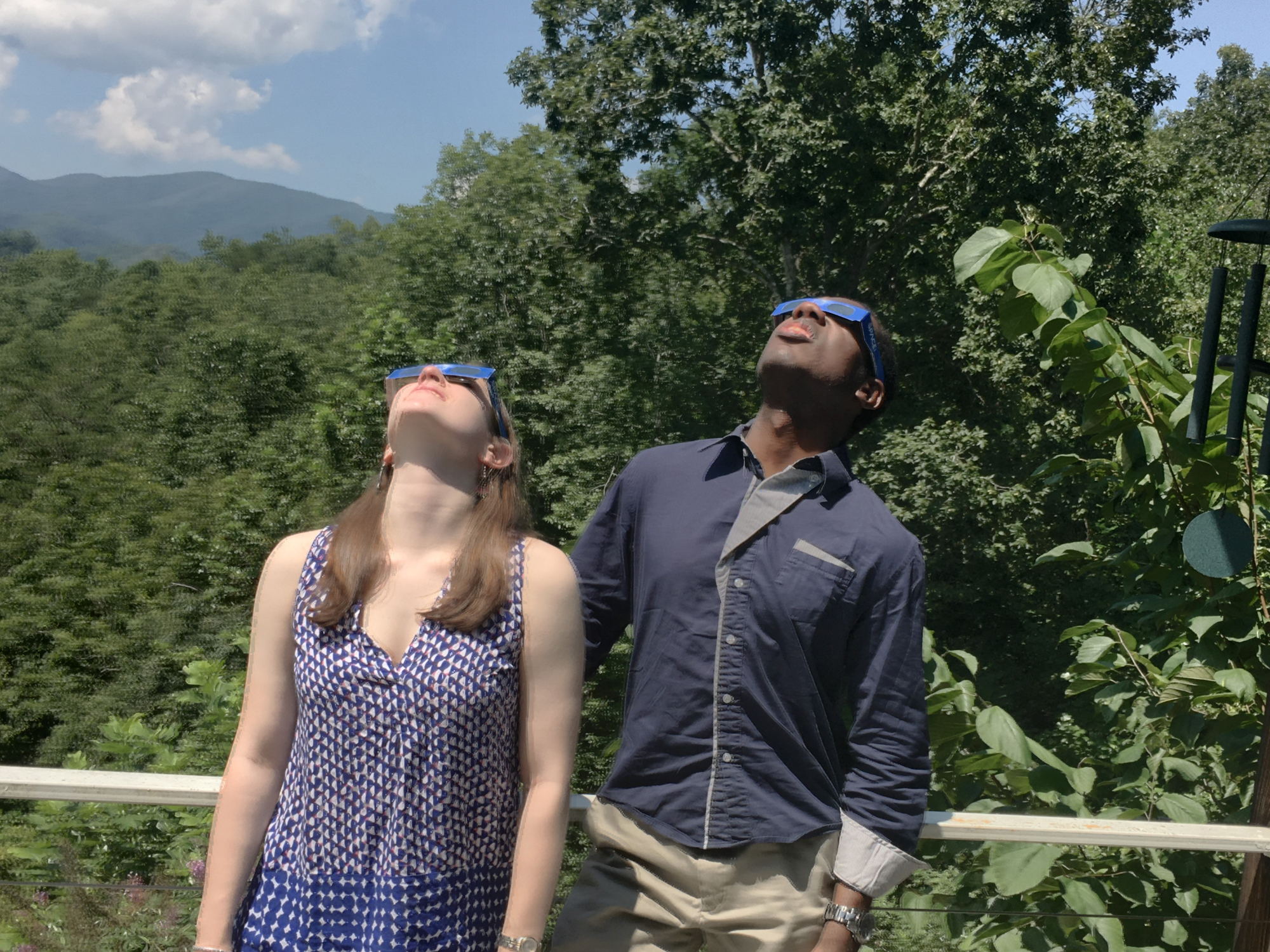
Armed with eclipse glasses, solar binoculars and random kitchen implements, Team Lewin set out to find the best way to look at Aug. 21's total solar eclipse.
Space.com Eclipse Glasses: 8/10
Classic yet flexible, these eclipse glasses accumulate fingerprints like a shiny countertop but are always ready to wear as the moon consumes the sun bit by bit, or to try and take phone photographs through (but the sun looks really tiny in the photographs). [Here Are the Most Amazing Photos of the 2017 Total Solar Eclipse]
Fancy 'Eclipser' Glasses: 9/10
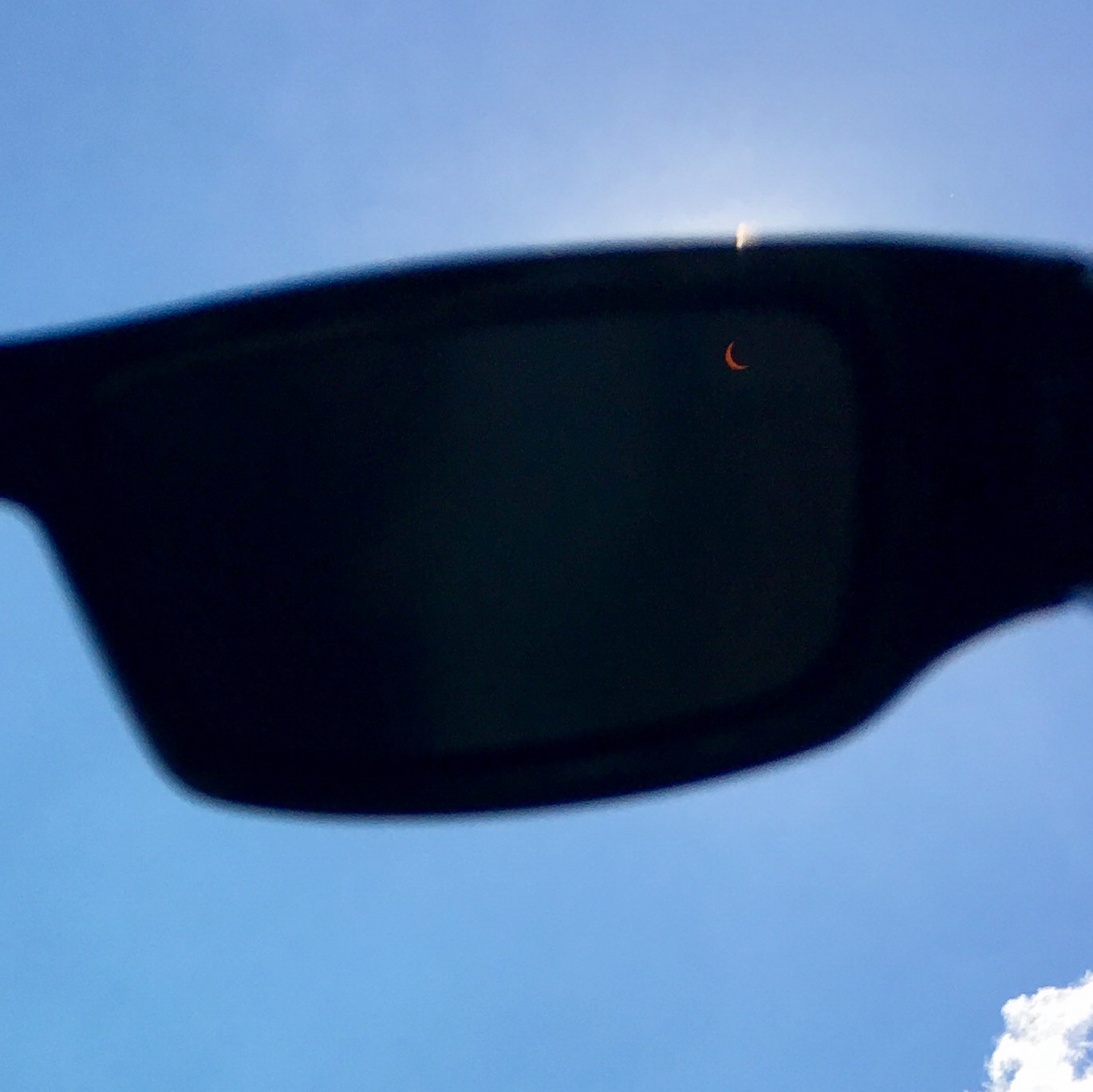
Same as Space.com eclipse glasses, but you're not worried about creasing them by mistake and they slip easily over glasses; can confuse and terrify onlookers because they look like normal sunglasses. Phone photos through them look tiny yet adorable.
Solar Binoculars: 9/10
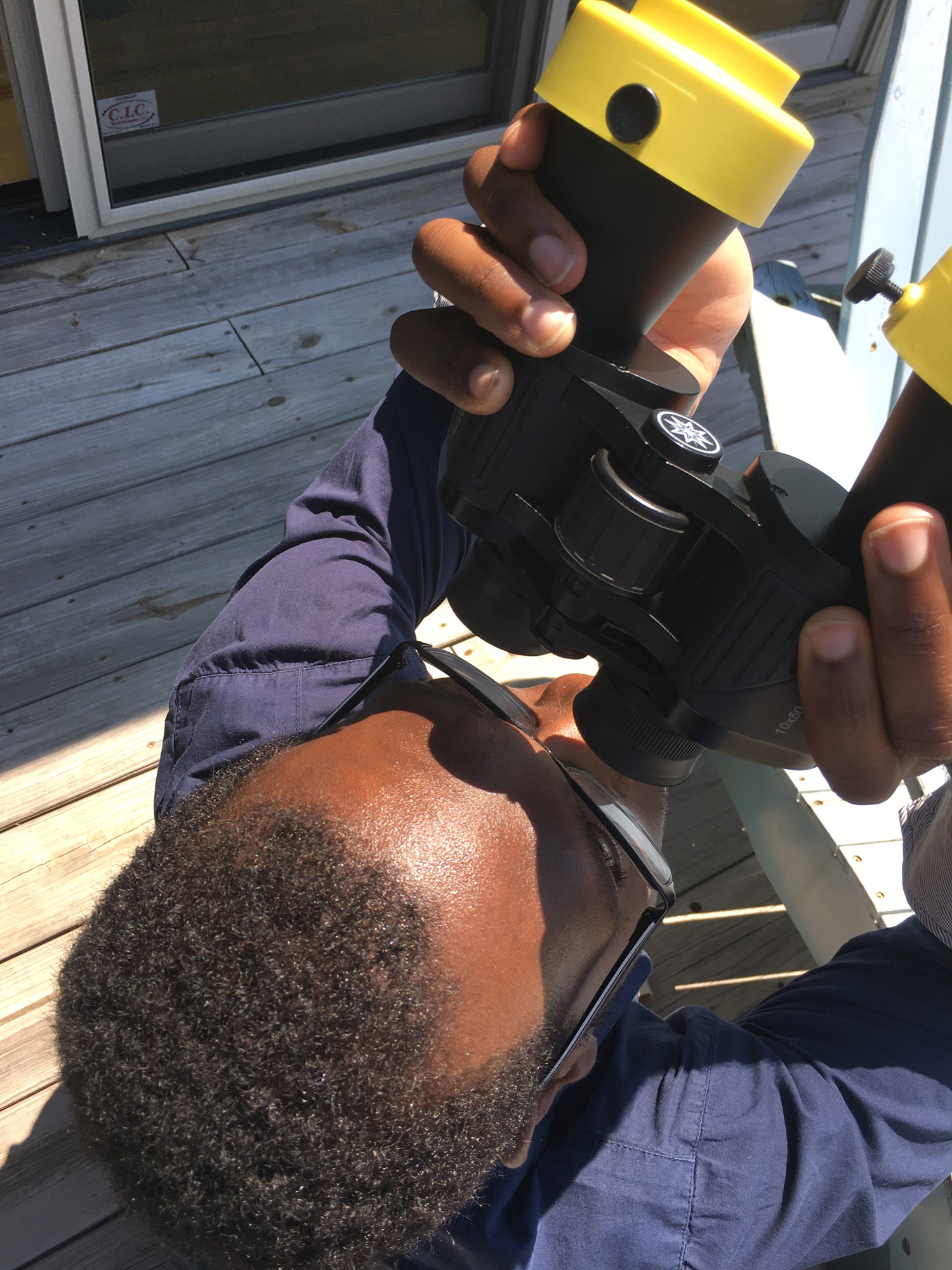
There were sunspots on there! We got to watch them being slowly consumed by the moon like so many insignificant specks in the face of overwhelming power! The binoculars weren't set up for photos or stabilized by a tripod, but we tried to capture a glimpse anyway in the below photo with the power of teamwork. It looked much better in person.
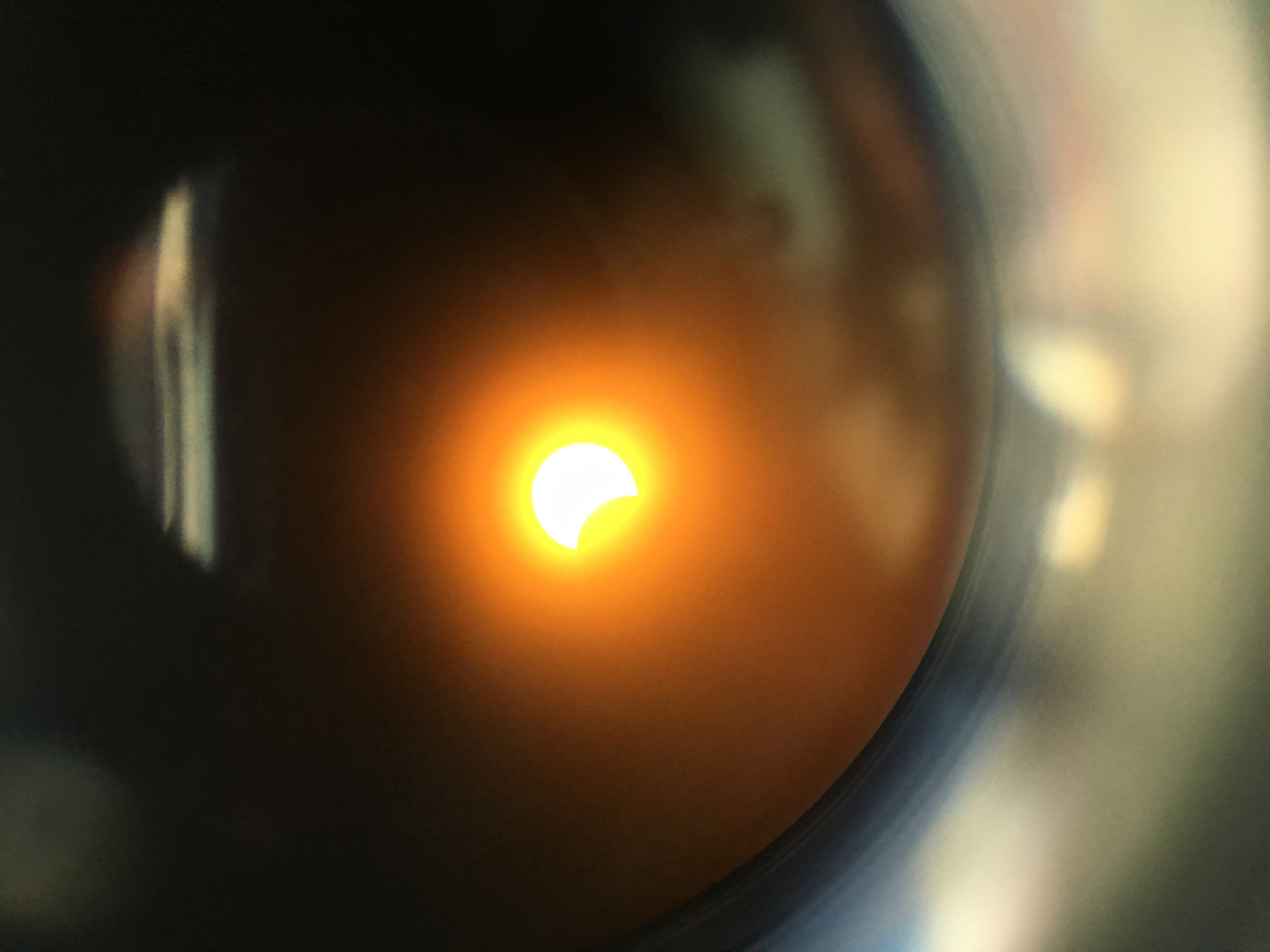
NASA Webcast: 5/10 (10/10 if you're not in the eclipse path)
We were in our family friends' cabin in the mountains of North Carolina, which made for a quiet place to view — NASA's webcast served as a backdrop of excited voices as groups reached totality again and again. Watching while an actual eclipse is going on overhead didn't make much sense, though. And it was hard to see the screen.
Colander: 7/10
I was the most excited to try this one out — we had forgotten to bring one, but luckily the cabin provided! As the sun shined through the holes in the kitchen implement, tiny projections of the eclipse formed on the ground. If the colander was held close to the ground, the circles would be nearly full, but the higher up you held it the more crescent-like its reflections would be. Very fun, but grew tiring for the arms after a time.
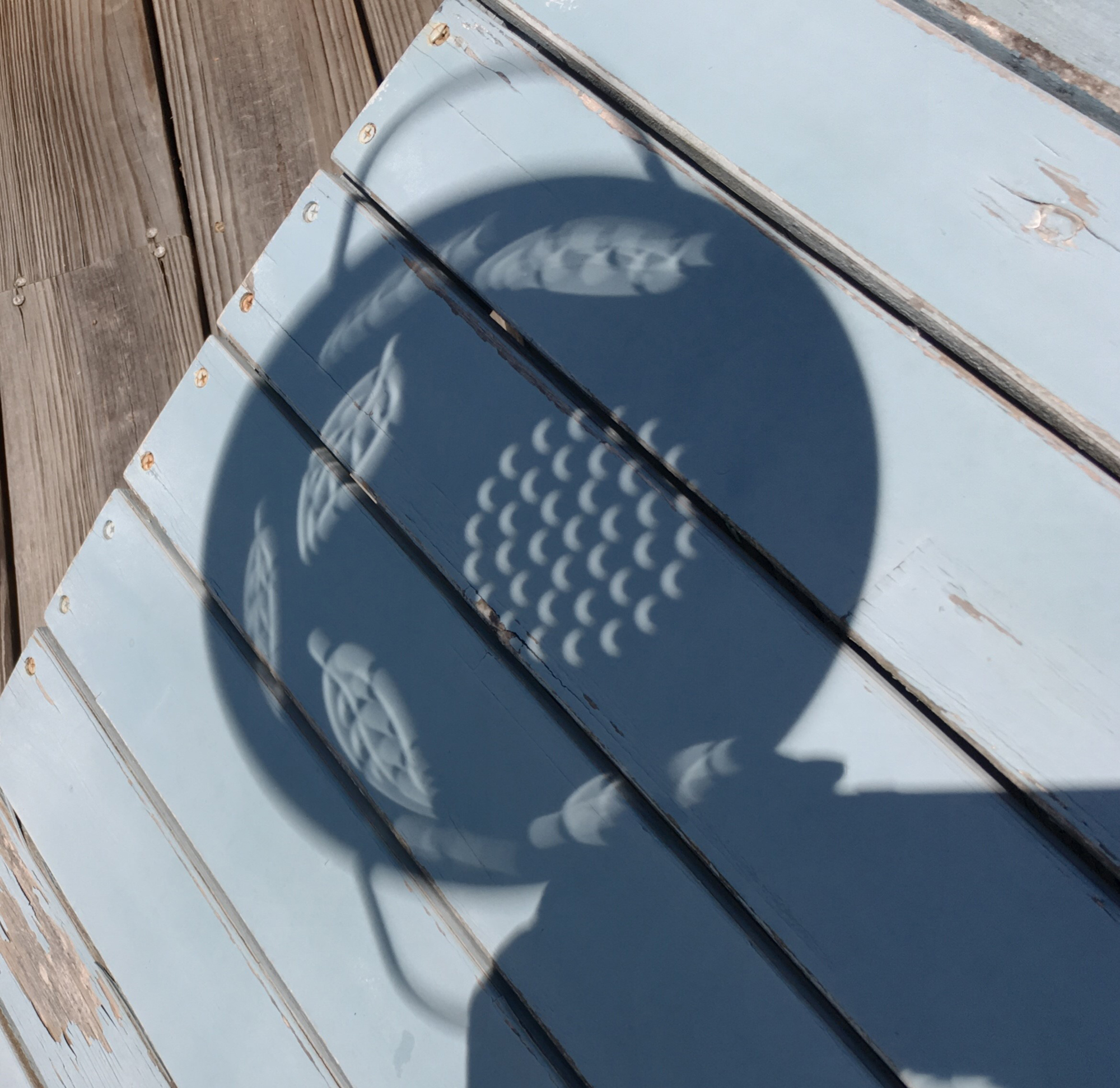
Cheese Grater: 6/10
Same as the colander but smaller and more dangerous to errant fingers.
Get the Space.com Newsletter
Breaking space news, the latest updates on rocket launches, skywatching events and more!
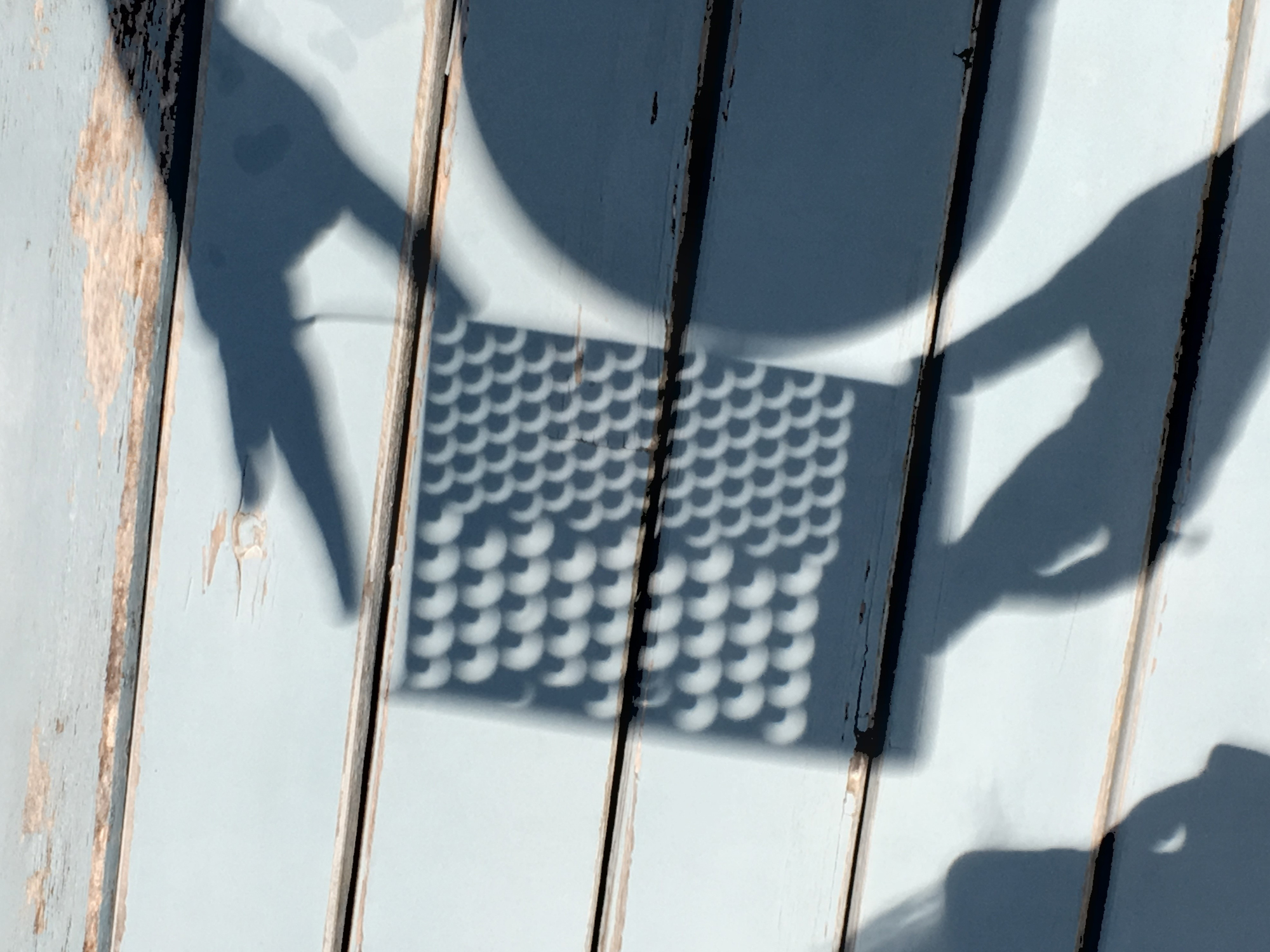
Crossed Fingers: 5/10
The cheapest pinhole projector! Crossing fingers over each other to create a tiny hole has a similar pinhole projection effect on the ground, only more wobbly and less clear. If you cross a bunch of fingers over each other, a tiny projection starts at each point of light.
Box Pinhole Projector: 6/10
I had tried one of these back at the office, but was relatively unimpressed, so I didn't build one for the eclipse itself. Here's how to make one with a longer expanse inside, which probably would have helped make the image larger.
Binocular Projection: N/A
I couldn't get this to work; won't give it a 0/10 because I think it was user error. I'll practice up before 2024, and I will redeem myself!
Leaves on the Ground: 6/10
As totality approached, I ventured off the balcony to see projections filtering down through the trees. These weren't as clear because the ground wasn't flat beneath them, but they got sharper and sharper as the slice of the sun got thinner.
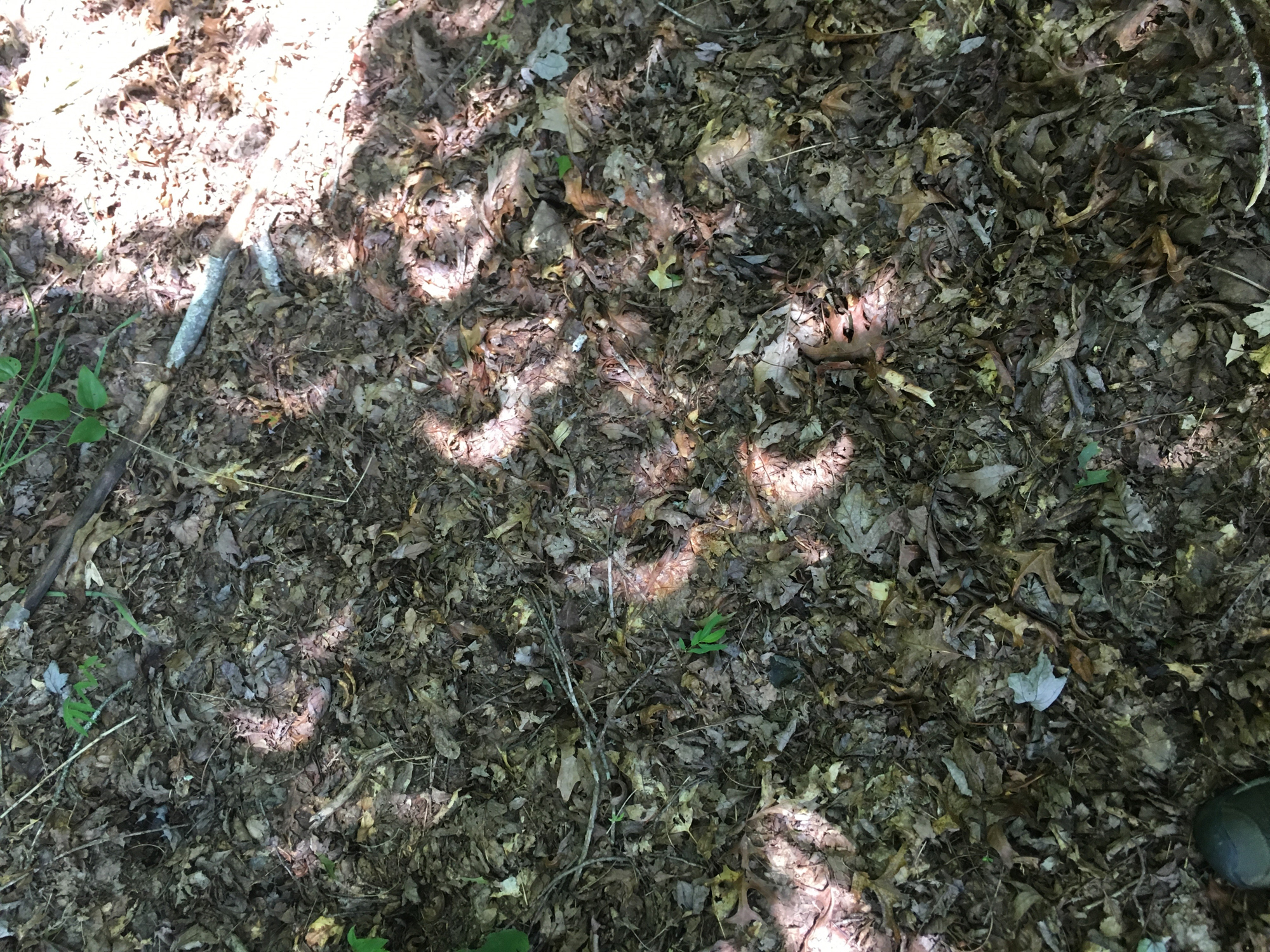
Random Shadows: 7/10
Once the eclipse had progressed enough, any random junction in the shadows seemed to form a miniature eclipse. The projections on the ground weren't particularly clear, but they get an extra point for coolness: Have YOU ever had tiny eclipses growing between each of your fingers? Didn't think so!
Clouds (Totality): 8/10
As the total eclipse approached, it suddenly got really dark — but as we instinctively freaked out a bit, it turned out it was just a cloud passing over the sun. But then it got dark behind the cloud, and my mom was able to catch this photo of totality shining through before the cloud cleared away. The ring was really bright!
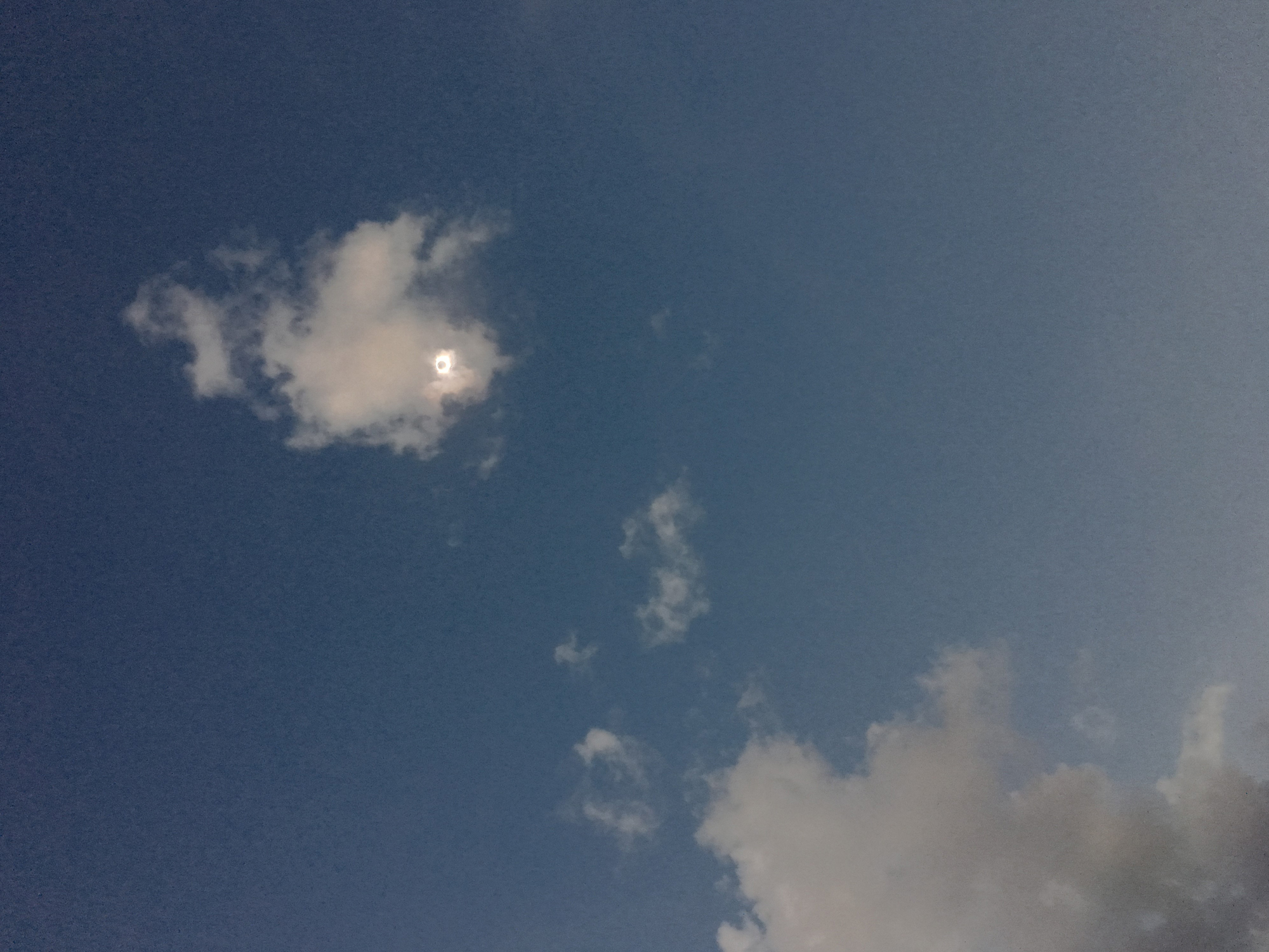
Naked Eye (Totality): 10/10
Once the cloud cleared, the ring of totality was left above. It was so much brighter in the sky than I expected — I briefly looked through eclipse glasses to double-check it wasn't somehow an annular eclipse, with the sun's photosphere shining through, but nothing was visible through glasses — and it was so clear and nail-thin in the sky. The sun's outer atmosphere shone in wide, pointy triangles out of the ring, and Venus (and a few other stars) appeared in the sky. It looked like the photos I'd seen, but clearer, and brighter, and smaller and thinner, and all around us behind the mountains there was the beginning of a sunrise. We snapped one photo with a phone (phone viewing of totality: 6/10) but it couldn't capture the twilight sky, the coolness or the insects chittering in continuous, rolling waves of sound. Then we spotted a brilliant gleam in the circle's right side — the diamond ring — and we had to look away again as the moon began to release the sun.
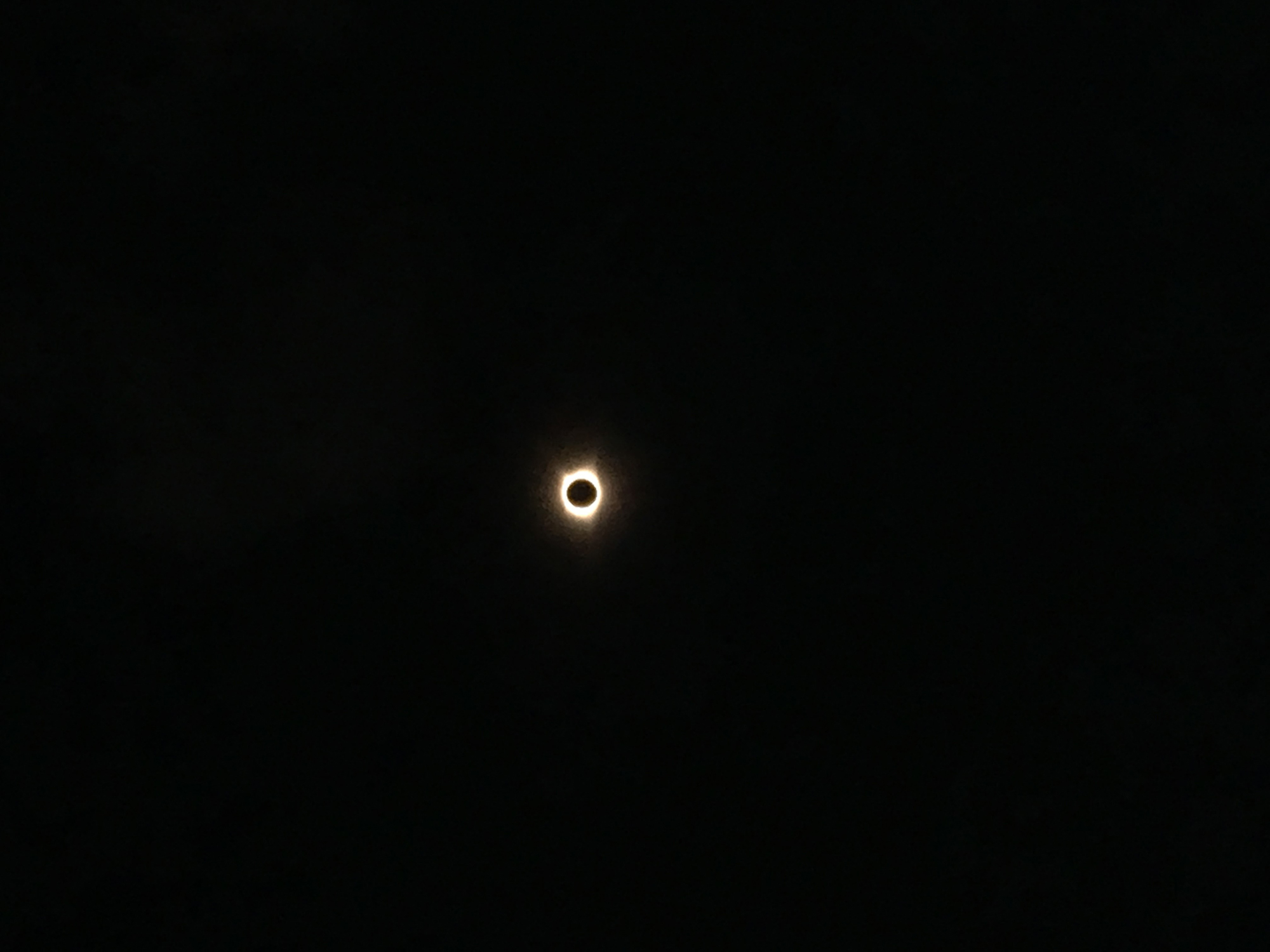
It gradually warmed up after totality, and the different bird species seemed to add their voices back to the sounds of nature one by one. While others got the big-group eclipse experience, and it's something I might search out in 2024 (when I get my revenge for the binocular failure!), the isolated surroundings gave us time to experiment, look things up, listen to nature and fully experience each stage of the total solar eclipse as it passed overhead.
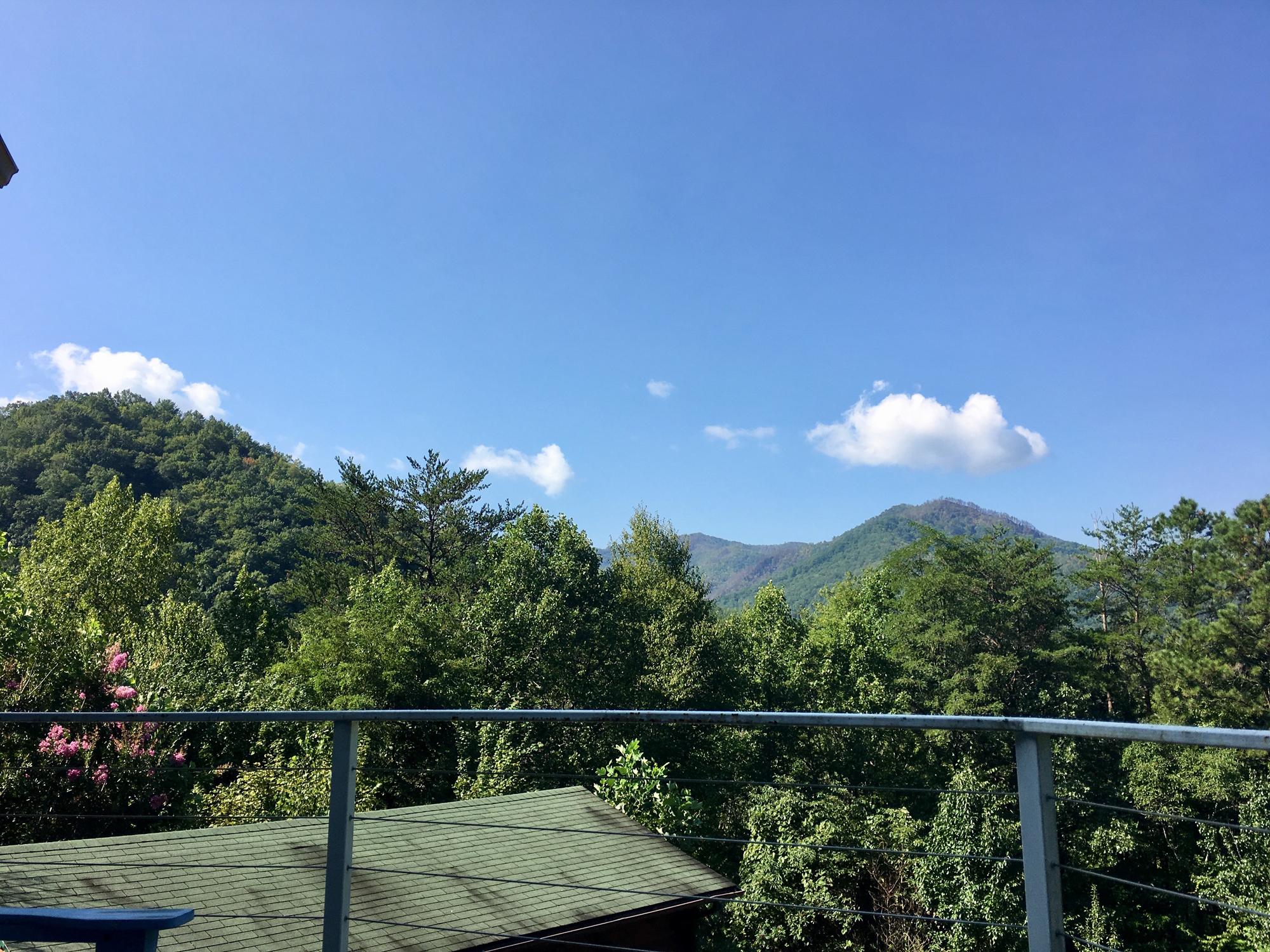
Mountainside Cabin with Family: 10/10
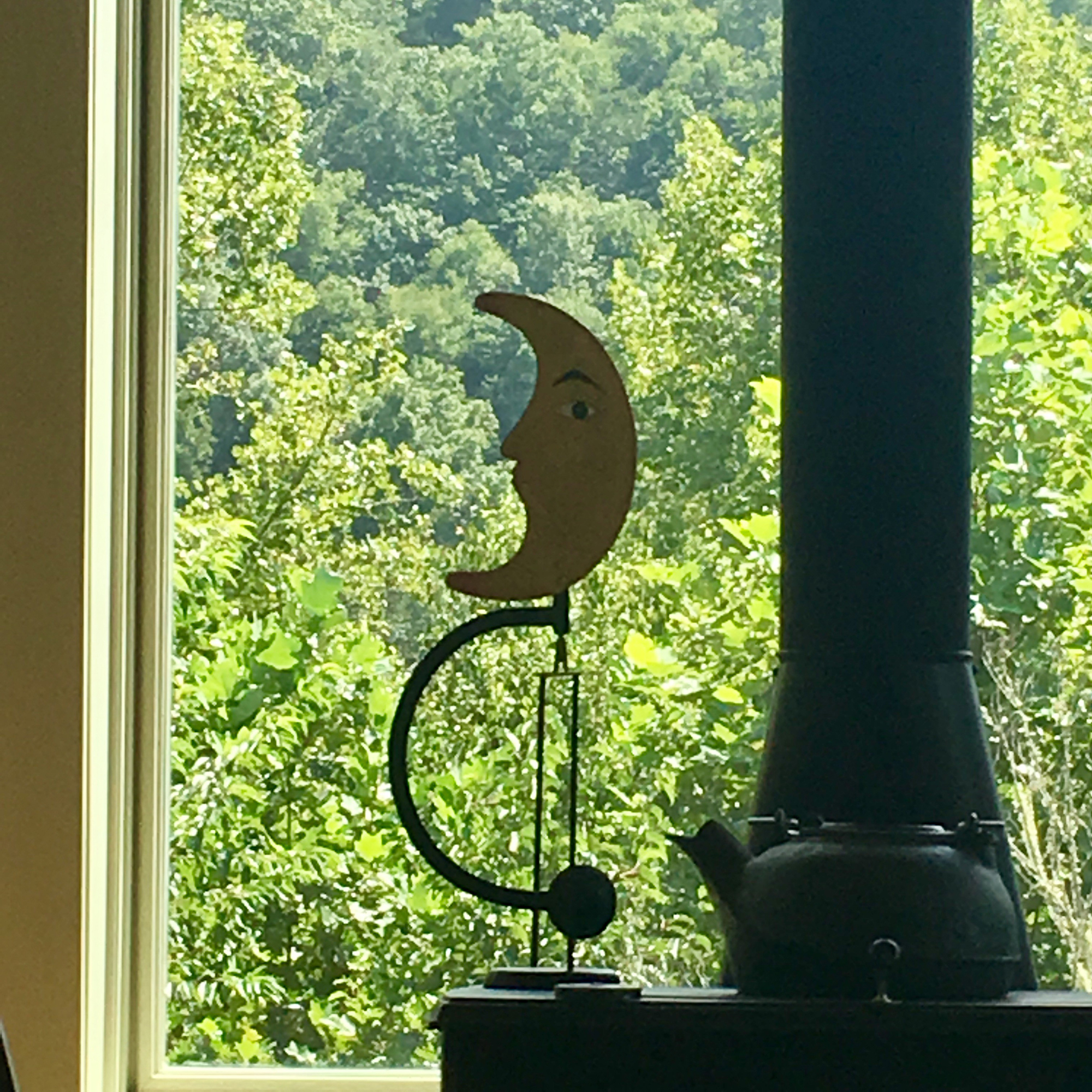
Email Sarah Lewin at slewin@space.com or follow her @SarahExplains. Follow us @Spacedotcom, Facebook and Google+. Original article on Space.com.
Join our Space Forums to keep talking space on the latest missions, night sky and more! And if you have a news tip, correction or comment, let us know at: community@space.com.

Sarah Lewin started writing for Space.com in June of 2015 as a Staff Writer and became Associate Editor in 2019 . Her work has been featured by Scientific American, IEEE Spectrum, Quanta Magazine, Wired, The Scientist, Science Friday and WGBH's Inside NOVA. Sarah has an MA from NYU's Science, Health and Environmental Reporting Program and an AB in mathematics from Brown University. When not writing, reading or thinking about space, Sarah enjoys musical theatre and mathematical papercraft. She is currently Assistant News Editor at Scientific American. You can follow her on Twitter @SarahExplains.









